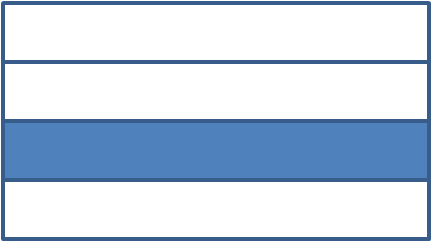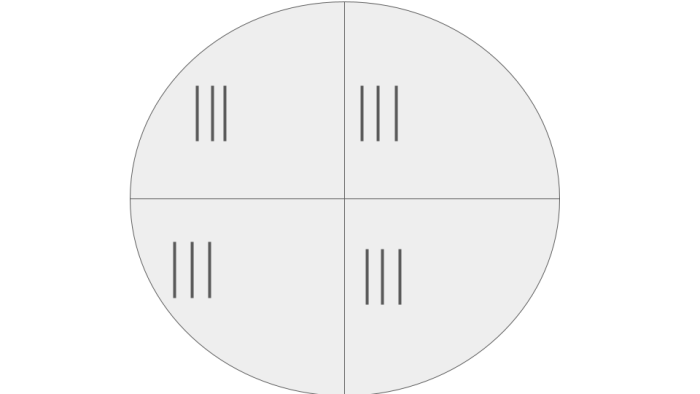In this activity, we will be testing your knowledge of all the different parts of fractions.
We will look at finding 1/3, 1/4, 2/4, and 3/4 of shapes, number of objects and lengths.
First of all, let's remind ourselves what each number in a fraction means:

Let's have a look at an example of each:
1. Finding 1/3, 1/4, 2/4, 3/4 of a shape
Here is 1/4 of a rectangle.

Let's look at each number in the fraction 1/4. The denominator (bottom number) tells us how many equal parts the rectangle will be split into.
It is four equal parts.
The numerator (the top number) tells us how many parts need to be shaded.
So this is 1/4 of the rectangle shaded.
2. Finding 1/3, 1/4, 2/4, 3/4 of a number of objects
Let's find 3/4 of 12 footballs:












Looking at the fraction 3/4, the bottom number (4) tells us how many groups we need to split the footballs into.
We need to split them into four equal groups.
Here, we have drawn out 12 footballs into four equal groups.
Each line represents a football.

The 12 footballs have been shared into four equal groups.
Now, we need to look at the top number in 3/4. It is 3.
This means we are working out how many footballs are in three of the groups.

Here, we have circled three of the four groups, so we just need to count up how many footballs are circled.
There are nine circled. So 3/4 of 12 footballs is 9 footballs.
3. Finding 1/3, 1/4, 2/4, 3/4 of a length
Pencil A is full length and pencil B is 1/3 the length of pencil A.
The bottom number in the fraction 1/3 is 3. So we have to imagine pencil A split into three equal parts.
Then we can see that pencil B is the same size as one of these parts as it is 1/3.
.png)
When you look at pencil A, the red and blue line shows it split into thirds.
Pencil B is the same size as 1/3.
If we were looking at 1/4 of a pencil it would be split into four equal parts.
Does that make sense?
Ok, there is lots to work through here, let's have a go with these questions .








